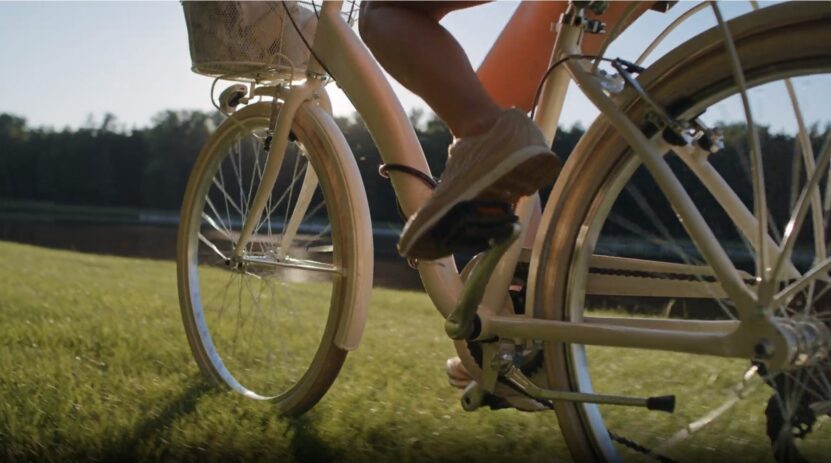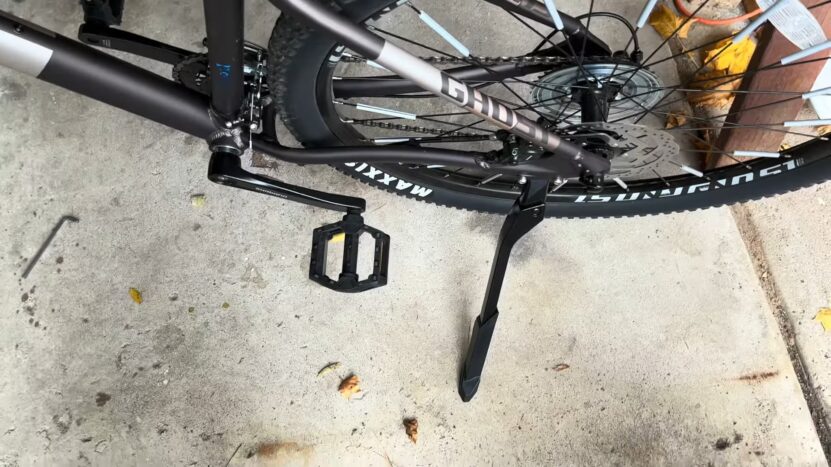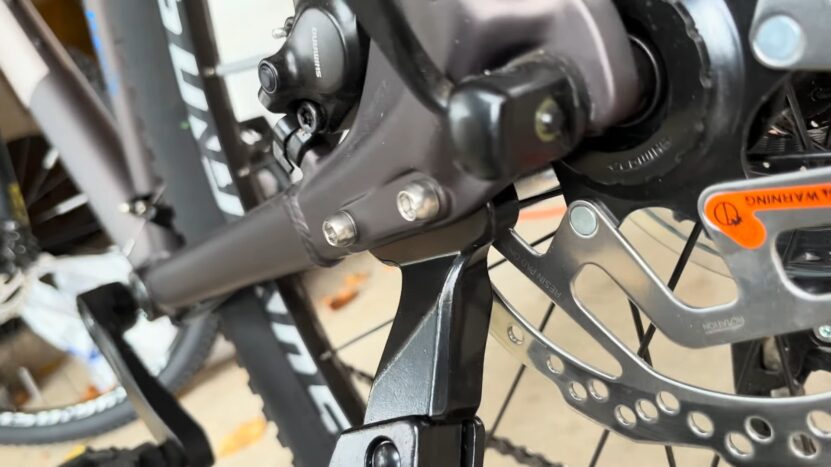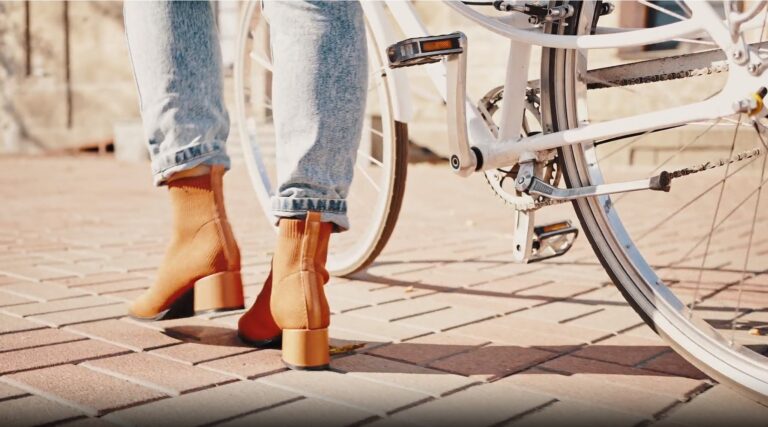As a seasoned cyclist and enthusiast, I appreciate the subtle yet significant role this accessory plays in safeguarding our prized possessions. While it might seem like a straightforward task to select and install a kickstand, the nuances involved in ensuring the right fit and functionality are manifold.
Now, I will meticulously unravel the process of measuring for a bicycle kickstand, drawing from my extensive experience and research
Showing the Ropes
Before diving into the measurements, it’s essential to grasp the fundamentals of kickstands and how they function with different types of bicycles.
Why Kickstands Matter
Kickstands are often overlooked, but they play a pivotal role in preserving your bike’s longevity and ensuring safety. A well-fitted kickstand prevents your bike from toppling over, which can lead to scratches, dents, or more severe damage.It provides convenience, especially when parking in areas without dedicated bike racks.
Different Variants
| Style | Position | Description | Best For |
|---|---|---|---|
| Side Stand | Near the rear wheel | Attached to the bike’s frame | Bikes that need support from the side |
| Center Stand | Middle of the bike | Positioned at the center, lifts the rear wheel when used | Bikes that require support from the center |
Key Measurement Points

To ensure a perfect fit, there are specific parts of your bike you’ll need to measure. These measurements will guide your kickstand choice, ensuring stability and functionality.
Chainstay Length
The chainstay is the part of the frame that runs parallel to the chain, connecting the pedal mechanism to the rear wheel. Measuring its length is crucial as the kickstand will often be attached near this area. Use a tape measure to determine the distance from the center of the rear wheel axle to the center of the pedal axle.
This measurement will help you identify kickstands designed for your bike’s specific geometry.
Ground to Frame Height
This measurement determines how tall your kickstand needs to be. Place your bike on a level surface and measure the distance from the ground to the point on the frame where the kickstand will attach. A kickstand that’s too short or too long can result in instability, so this measurement is crucial for ensuring your bike stands upright when parked.
Installation
Once you’ve taken the necessary measurements, it’s time to think about the installation process. A kickstand should not only fit well but also be easy to install and adjust as needed.
Tools Required
While many kickstands come with the necessary bolts and screws, you’ll need some basic tools for the installation. A wrench and a screwdriver are sufficient. Some modern kickstands might require specific tools, so it’s essential to check the manufacturer’s recommendations before starting the installation process.
Adjustability Features
- Some kickstands come with adjustability features.
- This allows for changing their length to achieve a perfect fit.
- Adjustability can be beneficial for various reasons:
- Switching between different terrains.
- Changes in your bike’s weight, such as when adding panniers.
- The primary advantage of an adjustable kickstand:
- Ensures your bike remains stable, irrespective of external factors.
Material and Durability
The longevity and performance of your kickstand are directly influenced by the materials used in its construction. It’s essential to choose a kickstand that can withstand the weight of your bik1nd the wear and tear of regular use.
| Material | Characteristics | Best Suited For |
|---|---|---|
| Aluminum Alloy | Lightweight, Resistant to rust | Lighter bikes, Conditions with potential moisture |
| Stainless Steel | Robust, Can support heavier weights | Heavier bikes, Rough terrains |
| Combination | Attributes of both aluminum and stainless steel | Bikes with varied weights, Diverse conditions |
Signs of Wear
Over time, even the most durable kickstands can show signs of wear. Regularly inspect your kickstand for any bending, rusting, or loosening at the attachment point. Addressing these issues early can prevent potential accidents and ensure your bike remains stable when parked.
Compatibility with Bike Types

Not all kickstands are suitable for every kind of bicycle. From mountain bikes to road bikes and hybrids, each type has specific requirements that need to be considered.
Road Bikes
Road bikes are designed primarily for speed and efficiency on paved surfaces. Their lightweight frames and thin tires make them ideal for long-distance cycling on smooth roads. Characteristics:
- Frame and Design: Road bikes typically have a streamlined design with drop handlebars that allow the rider to adopt an aerodynamic position.
- Tire Thickness: The tires are usually thin, reducing rolling resistance and enhancing speed.
- Needs: Given their lightweight nature, road bikes don’t necessarily need the sturdiest kickstands.
Hybrid Bikes
Hybrid bikes, as the name suggests, combine features from road bikes and mountain bikes. They are versatile, designed to handle a variety of terrains, from city streets to light trails. Characteristics:
- Frame and Design: Hybrid bikes come with a comfortable frame geometry, often with flat handlebars, offering an upright riding position.
- Tire Thickness: The tires are broader than those on road bikes but thinner than mountain bike tires, striking a balance between speed and stability.
- Needs: Given the varied terrains they might be exposed to, hybrid bikes require a kickstand that offers a blend of stability and durability.
Mountain Bikes
Mountain bikes are crafted for off-road cycling, particularly over rough terrains such as dirt trails, rocks, and mud. They are built to endure the challenges of the great outdoors, from steep inclines to rocky descents. Characteristics:
- Frame and Design: Mountain bikes boast a robust frame design, often with suspension systems to absorb shocks from uneven terrains. The handlebars are typically flat, providing the rider with better control.
- Tire Thickness: The tires are wide with deep treads, designed for maximum grip and stability on unpredictable surfaces.
- Needs: Given their heavier build and the rugged terrains they navigate, mountain bikes demand a sturdy and durable kickstand.
Price and Brand Considerations

While it might be tempting to opt for the cheapest option available, it’s essential to consider the reputation of the brand and the value for money the kickstand offers.
Trusted Brands
Several brands have built a reputation for producing high-quality kickstands that last. Researching and opting for a trusted brand can save you money in the long run, as their products often come with warranties and are built to last.
Value for Money
While price is a factor, it’s essential to consider what you’re getting for your money. A slightly more expensive kickstand that offers adjustability, is made from high-quality materials, and comes with a warranty might be a better investment than a cheaper alternative that might not last as long.
Safety and Maintenance Tips

Ensuring that your kickstand functions correctly is not just about convenience; it’s also about safety. A malfunctioning or improperly installed kickstand can lead to accidents. Regular maintenance can keep it in top shape and extend its lifespan.
Over time, the screws and bolts that hold it in place can become loose due to the vibrations from riding. It’s essential to periodically check these components and tighten them as needed.
This not only ensures that your bike remains stable when parked but also prevents the kickstand from becoming a safety hazard while you’re riding. Dirt, grime, and moisture can accumulate on your kickstand, especially if you often ride in wet or muddy conditions.
Regularly cleaning it and applying a light lubricant to its moving parts can prevent rust and ensure smooth operation. Its a simple maintenance step can significantly extend the life of your kickstand and keep it functioning optimally.
FAQ
Do all bikes come with pre-drilled holes for installation?
Not all bikes have pre-drilled holes. It’s essential to check your bike’s frame and consider clamp-on kickstands if there are no pre-existing holes.
Can I install a kickstand myself, or should I seek professional help?
While many cyclists can install a kickstand on their own using basic tools, if you’re unsure, it’s always a good idea to consult with a local bike shop to ensure proper installation.
Should I prioritize adjustable kickstands?
If you anticipate changes in your bike’s weight or the terrains you ride on, an adjustable kickstand can offer flexibility and stability.
Can one kickstand work for different models of bikes?
Some kickstands are versatile, but it’s always best to ensure the kickstand suits each bike’s specific requirements for optimal support.
Are there kickstands that can be adjusted on-the-go?
Yes, some adjustable kickstands allow for quick length changes, useful if you’re transitioning between different terrains.
Summary
Choosing and maintaining the right kickstand for your bicycle might seem like a minor detail, but it plays a crucial role in preserving your bike’s integrity and ensuring your safety.
By understanding the basics, taking accurate measurements, and considering factors like material, compatibility, and brand reputation, you can find the perfect kickstand that suits your needs.
Remember, a well-fitted and well-maintained kickstand not only keeps your bike standing tall but also reflects your care and dedication to your beloved two-wheeler.

